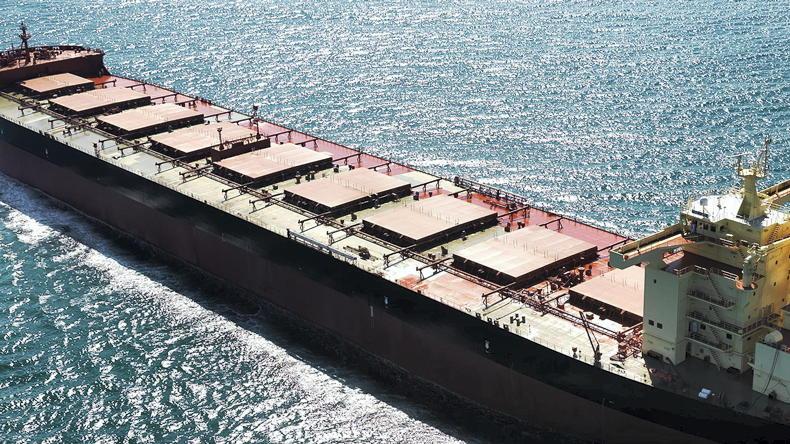While four countries account for almost two-thirds of nitrogen production globally, only 40% of all product manufactured is available for trade internationally.
In 2019, almost half (46%) of global nitrogen exports were controlled by two countries, China and Russia, according to United Nations Food and Agriculture Organisation data.
The extent to which fertiliser production has consolidated into the hands of a small number of global players is not always fully understood.
Five countries – China, India, the US, Russia and Morocco control almost 90% of phosphate production, 50% of which is available for export. China and Morocco accounted for half of phosphate exports in 2019. Potash is even more consolidated, with Canada, Russia and Belarus accounting for almost 70% of production or mining, almost 80% of which was exported in 2019.
Export restrictions
When global export availability of a commodity is highly consolidated, it doesn’t take much to tip the balance in markets. This year has seen the perfect storm for fertiliser markets, with production challenges and curtailments followed by a series of export restrictions by major exporters.
While some countries will be directly exposed to an individual country’s export restrictions, in reality all farmers are affected. Reduced export availability globally increases demand and ultimately price.
Russia introduced temporary export quotas from 1 December on nitrogen fertilisers of 5.9m tonnes in total for a period of six months. The most significant impact is on ammonium nitrate, which is the main fertiliser used in Russia. Exports will be less than half (46%) of the average of the past three years according to Profercy. Urea availability, compared to last year’s exports, should be relatively unaffected.
Similarly, China imposed restrictions on fertiliser exports until June 2022 over concerns about domestic supply. As a result, domestic fertiliser prices in China have started to fall.
Egypt, which accounts for 7% of global nitrogen exports, has increased the price of subsidised urea fertiliser to domestic farmers by 50%. Egyptian producers are required to direct at least 65% of their production to the domestic market, again restricting availability for export.
The combined export restrictions in place in China, Russia and Egypt mean that over half of global nitrogen export availability is currently constrained.
Restrictions have also been imposed by Turkey on Diammonium Phosphate (DAP) and NPK fertilisers. In addition, economic sanctions imposed on Belarus, which accounted for one-fifth of the global potash exports and which is a key European supplier, are causing concern about export availability.
China and Belarus together accounted for one-third of global potash exports in 2019, and both are now restricted.
In the US, cutbacks to domestic production have been compounded by the aftermath of Hurricane Ida, which posed further production and logistical challenges. Across the world, buyers scrambling for supply have and continue to pay premium prices.
EU Self Sufficiency
Access to world fertiliser markets is key for European farmers. The EU-27 was 91% self-sufficient in nitrogen and 82% self-sufficient in Potash in 2019 making it a net importer of both nutrients.
Curtailments in European Nitrogen production this year will have resulted in lower production. FAO data indicates that self-sufficiency in both nutrients has improved in the past decade.
The EU-27 is a net exporter of phosphate at 123% self-sufficient and export availability has grown in the past decade.
Global price movements
The Profercy World Nitrogen Index, based on global nitrogen prices, has fallen for the first time in four months by 1.23 points on the back of slowing demand in the past few weeks.
It remains roughly 30% above this time last year.
Irish farmers are currently paying roughly the same for Urea (€905 /tonne) and Potash as their US counterparts. However, Russian farmers are buying Urea at roughly 40% of the Irish prices with current Russian prices in the region of €380 / tonne conferring a significant advantage on Russian farmers.
The realisation that in today’s world nitrogen equals food is quietly dawning on many as the media draws more attention to what has up to now appeared to be a problem for farmers.
Come next summer, when availability of a whole array of fruits and vegetables are in shorter supply and cost that bit more, the reality will fully sink in with the consumer. The cost of almost all food products in the weekly shopping basket will likely increase.
The current high fertiliser prices will fall eventually and export restrictions will lift when peak usage has passed.
However, the risk of small farm businesses relying on availability of a key input from a few large and powerful global players remains.
Price and supply events may become more frequent in the next decade as the world transitions to a green economy and agricultural production, energy and global logistics all face significant change.
It’s envisaged that farmers will use less chemical fertiliser in the future but ultimately large global and European fertiliser manufacturers will still want to make their margin. If less product is consumed, it is highly likely the price will increase.
European fertiliser manufacturers have had their margin supported for the past two decades by the EU’s anti-dumping duty. It is surely appropriate to look at the policy options available to ensure that farmers margins and livelihoods can now be protected in the same way, given they are at the mercy of some of the largest and most powerful players in global industry.






 This is a subscriber-only article
This is a subscriber-only article










SHARING OPTIONS: